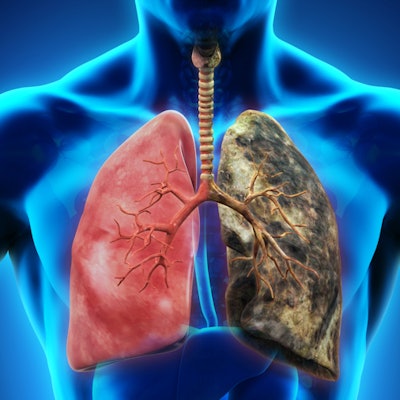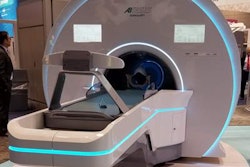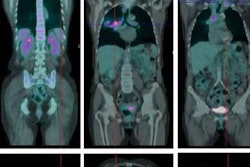
Thermal ablation is safe and effective for treating early-stage non-small cell lung cancer (NSCLC), and it could be a suitable alternative to stereotactic radiotherapy (SRT) for patients who can't undergo surgery because of age or health status, according to research published online September 18 in Radiology.
Investigators led by senior author Dr. Hyun "Kevin" Kim from Yale School of Medicine compared thermal ablation and stereotactic radiotherapy for treating early-stage non-small cell lung cancer (NSCLC) in nearly 30,000 patients. They found that both treatment methods delivered comparable two- and five-year outcomes.
Surgery is typically the early-stage treatment of choice for NSCLC, which accounts for approximately 85% of all lung cancers. However, older patients and those with other conditions may not be ideal candidates for surgery because of a higher risk of complications, according to the group.
While SRT is a viable option in these patients, radiation sometimes harms healthy tissue and comes with a risk of short- and long-term toxicities. It also requires multiple visits.
On the other hand, thermal ablation most often requires a one-time treatment, and, via imaging guidance, it can deliver accurate and precise localized treatment only to cancer calls. This minimizes the effects to surrounding tissue and keeps toxicity low, Kim said in a statement from the RSNA.
The multidisciplinary team of thoracic oncology researchers compared the outcomes of approximately 29,000 patients from the 2004-2013 National Cancer Database, which included more than 1,100 patients who received thermal ablation. They found that the thermal ablation group had a two-year survival rate of slightly more than 65%, compared with 64.5% for the SRT group. The thermal ablation group had a five-year survival rate of just below 25%, compared with slightly more than 26% for the SRT group.
"The outcomes for patients who received thermal ablation for early lung cancer were quite similar to those who received SRT," Kim said.
The researchers noted that thermal ablation also has the advantage of providing direct access to the tumor, enabling physicians to collect biopsy samples during the procedure. That's not possible with stereotactic radiotherapy.
"This is a real value to our patients, especially as tissue sampling becomes more and more important in personalized, precision cancer treatments," Kim said.
What's more, the one-time treatment offers lower direct costs for patients and insurance providers, and it could prove to be a more cost-effective alternative to radiation therapy, he said.
In the next phase of their project, the researchers plan to further evaluate the potential role of thermal ablation in the total care of lung cancer patients. For instance, combining ablation with immunotherapy may produce better results than those of ablation or immunotherapy alone.



















